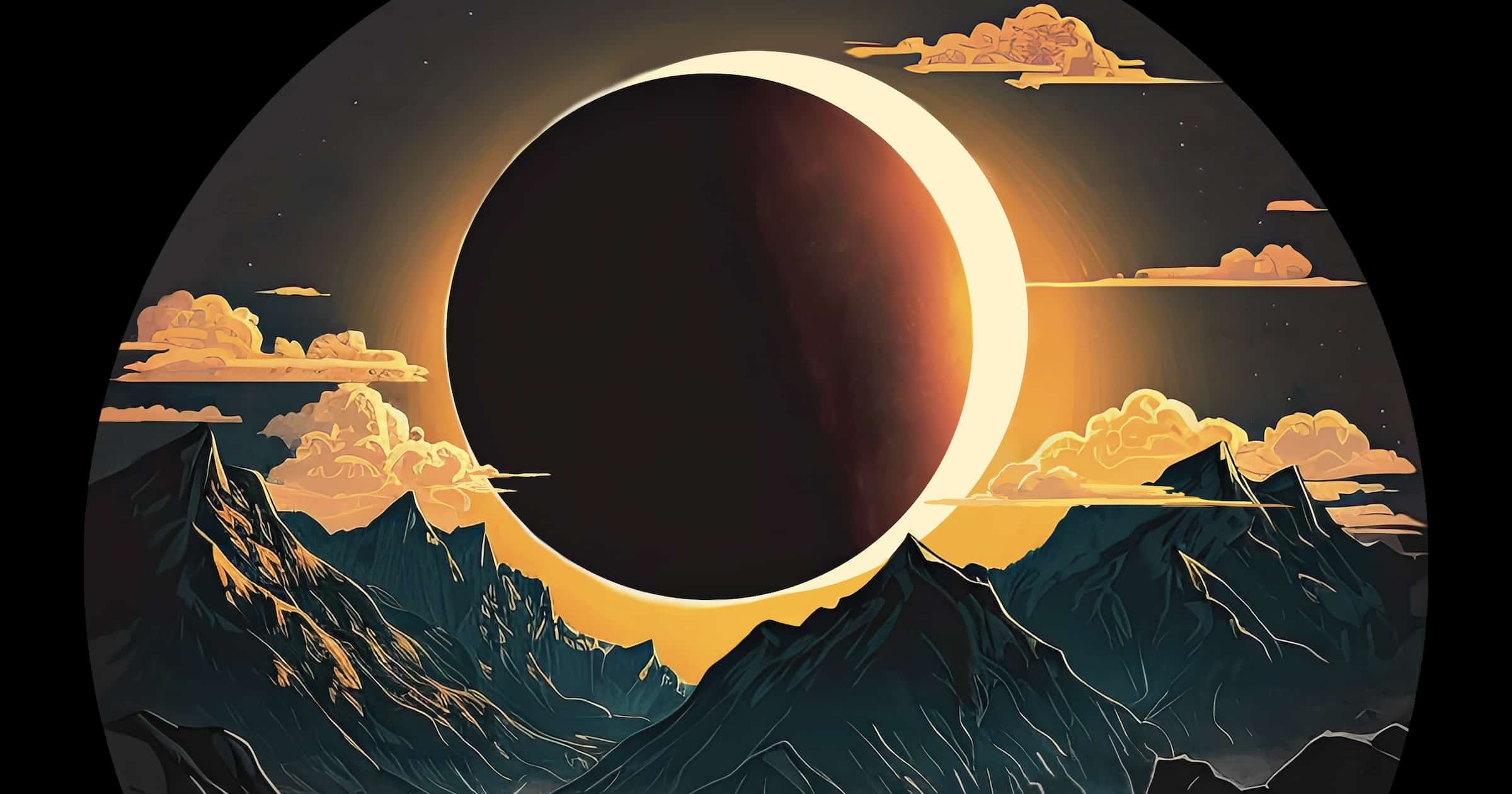 Intelligent Design
Intelligent Design
 Physics, Earth & Space
Physics, Earth & Space
The Joy of Purposeful Solar Eclipses

Intelligent design advocates have more fun at eclipses, believing they are not just coincidental but have served human ability to gather scientific knowledge for millennia. That was certainly my experience on April 8. As the event fades into memory, here is a quick photo story of Discovery Institute’s excellent “Solar Eclipse Experience” in Waxahachie, Texas.
The event opened April 7 in the evening before the eclipse, with lectures by Jay Richards and Guillermo Gonzalez speaking in the auditorium of Nelson University. Pam Bailey did a superb job coordinating the activities. Here is Dr. Richards beginning his presentation.

The two speakers announced that a newly revised 20-year anniversary edition of The Privileged Planet will be published this fall. During his presentation, Dr. Gonzalez shared the total eclipse portion of Illustra Media’s film of the same title. Afterward, the two signed advance bookplates for the new edition for those planning to buy the updated book. I snuck in a photo with them.

Eclipse Day
The sun rose to a completely overcast sky, causing worries that the eclipse might not be visible. With hopes and prayers ascending, crowds began arriving at Nelson University’s soccer field where crews set up a stage and sound system. Before noon, as patches of clear sky gradually began showing through, Jay and Guillermo told the crowd what kind of things to look for. Richards joked that in his prayers he was saying “Hail is fine at 4 o’clock!” if they could see the eclipse at 1:39 pm local time. With cameras mounted in hope, and eclipse glasses on, my nephew and I waited for the clockwork of the heavens to reach the magic moment.

Totality
Whether providentially or meteorologically as one wishes to view it, a huge window in the sky opened about a half hour before totality. The sky began its slow darkening after first contact, and everyone was getting excited! The sky darkened minute by minute, and the temperature noticeably dropped. “You’ll know when totality comes,” Jay said.

It was now almost dark with a 360° sunset, and voices rose with happy astonishment as the last “diamond ring” of sunlight began to fade. It was time!

The crowd roared with joyful screams and applause as the brilliant corona appeared around the black disk of the moon. Throughout the 4 minutes and 19 seconds of totality, the crowd was in awe in hushed tones. Some began singing a hymn. Shutters clicked. People gazed without needing their solar glasses, or through binoculars, at the dazzling spectacle. The pink chromosphere added color to the black-and-white apparition, and at least one large prominence showed a red arch jutting out from the solar disk. Several stars and planets were visible.
Those four precious minutes will be remembered by everyone present. And when the ending diamond ring reappeared, there was another round of applause, with hugs and high-fives everywhere. It was a perfect eclipse!

As the sunlight began to grow back, Jay and Guillermo returned to the stage for additional remarks, a quiz game with “moon pies” as prizes, and a chance to take audience questions.

By fourth contact a half hour later, when the eclipse was officially over, clouds reappeared to cover the sun. Was this another mark of providence? Or did the clearing have a natural explanation? Some think that lowered atmospheric temperatures shortly before and after totality tend to reduce cloud cover. Perhaps. But since Earth is the only place in the solar system where perfect eclipses occur,1 and since Earth is the only planet with sentient beings to appreciate them, and since perfect eclipses offer humans so many opportunities for scientific discovery, one could be excused for agreeing with Richards and Gonzalez that this fortuitous convergence of factors suggests “conspiracy and not just coincidence.”
This was my third total solar eclipse, along with two annular solar eclipses. It’s hard to top one’s first eclipse, but this one was certainly up there. My heartfelt thanks to Discovery Institute for putting together this glorious and successful event.
Notes
- Gonzales calculated all the places where perfect eclipses could occur in our solar system. One other body qualified: the little moon Prometheus at Saturn. If someone were drifting in the cloud tops of Saturn at the right time, he might see an eclipse for half a second. But the Cassini spacecraft photographed Prometheus, and found it is potato shaped! I remember those first images of it when I worked at JPL. This confirms that the only location in the solar system with perfect eclipses is the only place that has intelligent observers. How cool is that?
